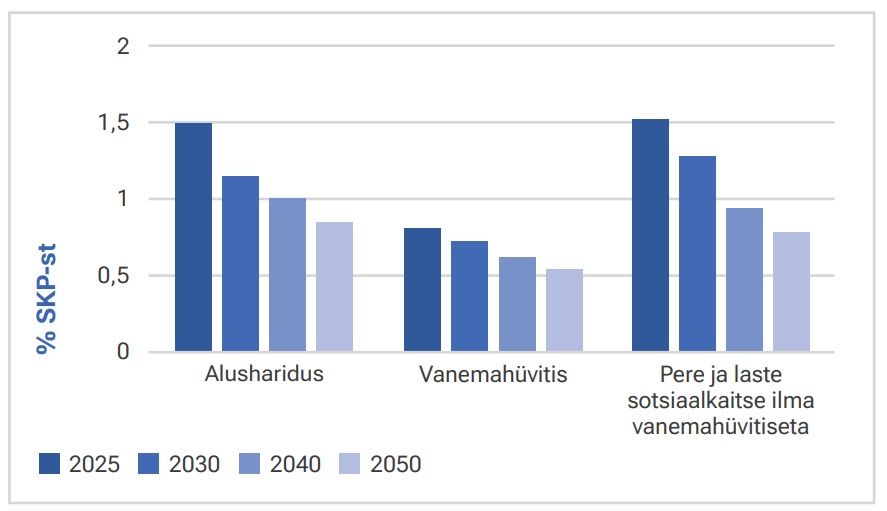Current low birth rate will lead to up to 1.3 billion euros less tax revenue in the future
In its new short report “The impact of population ageing and low birth rate on long-term state revenue and expenditure”, the Foresight Centre notes that the lower than projected birth rate will reduce government spending on family policy and education, but in the long term, it will mean up to 1.3 billion euros less in tax revenue.

In 2022-2024, up to 7500 fewer children than projected were born in Estonia and as a result, the government saved 100 million euros in benefit payments, and expenditure on education will also decrease in the future. Kaupo Koppel, expert at the Foresight Centre, explained that in the last three years, Estonia’s birth rate has been below both Eurostat’s and Statistics Estonia’s population forecasts. “Unfortunately, lower birth rates also mean a decrease in tax revenue in the coming decades, and the ageing of the population will lead to an increase in public sector spending on long-term care and healthcare,” said Koppel.
Conservative calculations show that each unborn child means approximately 100,000–190,000 euros in lost tax revenue for Estonia. The Foresight Centre reveals in its short report that, in total, the current lower than projected birth rate means that Estonia will have at least 750 million to 1.3 billion euros lower revenue base over the next 40–60 years.
According to the recent forecast by the European Commission, the ageing of the Estonian population will lead to a structural change in public sector expenditure.
It is projected that by 2050, long-term care costs could rise up to 15 times in Estonia. At the same time, there will be a moderate but steady increase in healthcare costs. Expenditure on pensions will remain at the same level in the coming decades, but will decrease in the long term, as due to pension reforms, the expected future pension replacement rate will be lower. The role and contribution of individual pension accounts in future pensions will increase, but this is not reflected in public sector pension costs. However, education and family policy expenditure will decrease considerably due to lower birth rates and a decline of the younger population.
In a risk scenario, if besides demographic change the coverage or extent of services will be expanded, the cost of long-term care could rise to more than 6% of Estonia’s GDP by 2070 and exceed the increase in pension spending. “Lower birth rates will result in reduced family and education expenditure by up to two times, but this will not compensate for the increase in costs related to the elderly,” said Koppel.
The short report “The impact of population ageing and low birth rate on long-term state revenue and expenditure” (in Estonian) is part of the Foresight Centre’s follow-up monitoring during which the impact assessments of the population scenarios prepared in the Foresight Centre’s monitoring of the future of the labour market and the impact of the war in Ukraine on the state revenues and expenditures are updated.
Latest news
-
10.11 2025Report: Estonia could learn how to control healthcare costs from the Netherlands
The expenses of the Estonian Health Insurance Fund significantly exceed its revenues, and the accumulated reserves will be depleted in the next five years. Other European countries in the same situation have cut healthcare services and increased people’s co-payments. According to the Foresight Centre’s new short report “Other countries’ experiences in managing healthcare budget deficits”, both solutions have worsened public health and deepened inequality.

 An independent think tank at the Riigikogu
An independent think tank at the Riigikogu